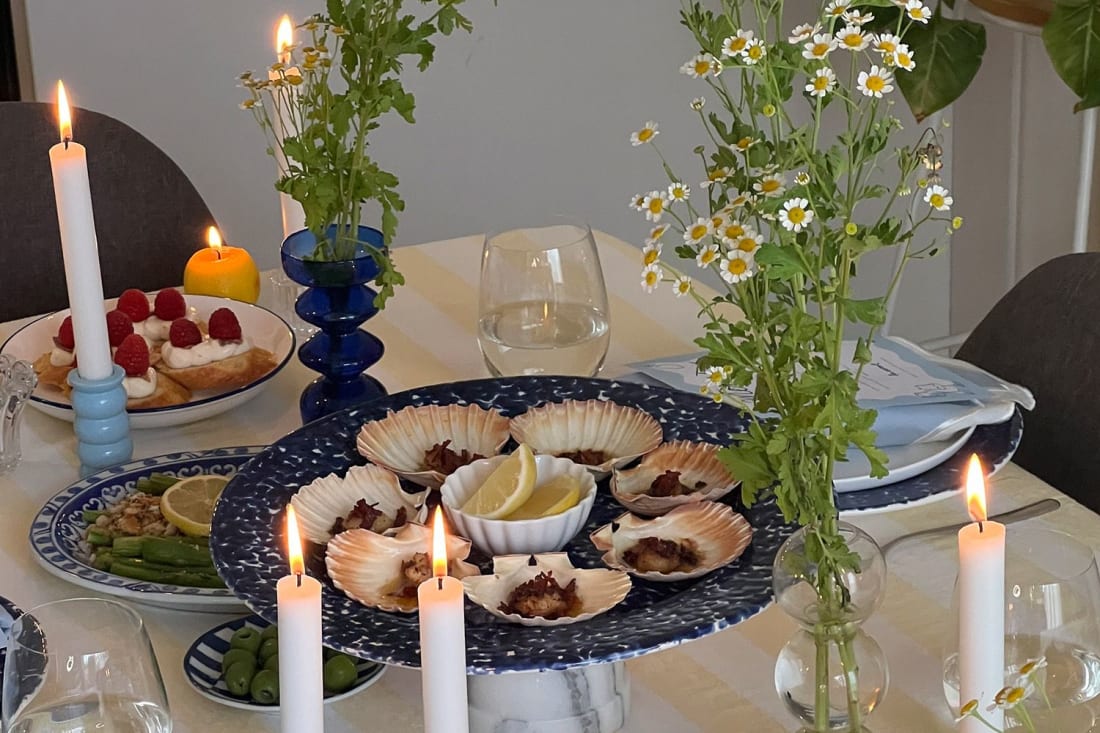7 things to read to rebuild your relationship with food
A curation of newsletters and books that look at the act of eating through the lens of storytelling and memory-making
A curation of newsletters and books that look at the act of eating through the lens of storytelling and memory-making
What comes to your mind when you hear the word “food”? Conversations around what you’re eating are so common that few people pause to think about how the term makes them feel. The truth is, our relationship with food goes well beyond the act of feeding and being fed. This dynamic is so complex and layered that a world of emotions could unfurl through every meal. Think of that tub of ice cream that made you feel so good when you watched the series finale of Stranger Things. Think of those bagels that kept you company when you didn’t have friends at work and ate lunch alone.
Even when you’re not eating, dialogue around food seems ever present. Whether you’re waiting at the tube station and see an ad for how Pasta Evangelists now delivers anywhere in London, or if you’re scrolling on Instagram and find an influencer mixing up Huel for a post-workout snack, in many ways, seeing, smelling, hearing and talking about food is inevitable. But in a late capitalist society, this conversation around food is often influenced by numbers on weighing scales.
For many, the joy of grocery shopping is tainted by the crippling anxiety of reading fine print ingredients and calculating the number of calories per serving. For these people who struggle with eating, going to a restaurant is not about the company but how you can shield these anxieties while social media becomes a playground for (mostly unwarranted) comparison. In fact, as per a 2021 study conducted by non-profit Transparency Project and tech group Reset, Instagram had a pattern of pushing accounts full of “disturbing images of underweight women” to users showing an interest in becoming thin.
In response, the social media giant updated its sensitive content control feature to include a “body weight control” option in 2022, allowing users to remove ads for damaging products like detox teas and unproven diet plans. Besides thinspo content, discussion around mindful and intuitive eating continues to grow as well; creating manuals on how and when to eat. These conversations around food in relation to body image are so loud and all-consuming, that it requires active effort to think about it from a multifarious narrative of culture, identity, emotion and politics.
What we eat is deeply personal and frames who we are and where we come from. Food is also the cultural lynchpin that helps us bond and build memories. Think of the time when you took Indian curry for lunch and the canteen became a feisty tasting ground, with everyone sharing stories of their spice tolerance. There’s also a hefty component of emotion, like those cookies that brought you comfort when you were broke (looking at you, Maryland chocolate chip biccies) and to this day taste better than the freshly baked, chunky ones from Créme. Despite feeling this nostalgia, love and celebration through food, on many occasions the negative connotations scream louder because of their prevalence.
The vocabulary used to talk about food – clean, junk, superfood, forbidden – shapes this judgement of what counts as “good” and “bad” so much so that it becomes difficult to appreciate what we eat beyond this binary. But it’s important to consciously create space for healthy conversation around food, where “health” has more to do with wholesome memories and thoughtful storytelling than nutrition. And plenty of newsletters, anthologies, books and columns are doing just that. While this content may not be as ubiquitous as food and diet culture, it definitely exists.
These alternative stories include a diverse variety of experiences and identities that can help you situate yourself in more positive narratives and reestablish your relationship with food, on your terms and away from the damaging impacts of numbers. To help you begin this journey, we have curated a collection of writings that look at eating as a memory making activity. From memoirs of living and eating in unknown countries to stories of how food becomes the ice breaker during endless dates and relationships, here’s seven things to read to reimagine how food makes you feel:
Tiny Moons: A Year of Eating in Shanghai
Nina Mingya Powles’ collection of essays is best read with a bowl of chilli garlic noodles. Having lived in Wellington, New Zealand, Kota Kinabalu, Malaysia and Shanghai, China, the Chinese-Malaysian writer explores how food helped her build a relationship with her culture when her language abilities struggled. The book stems from a blog that Powles maintained while she was a student in Shanghai and each essay looks at how a specific dish — banana fritters, wonton noodle soup, Chinese aubergines — helped the writer find her feet in a country that’s meant to be home. While the book promises to make you crave a Chinese takeaway, it is also a sensitive contemplation on cultural hybridity and belonging.
Since No One Asked
There’s a certain romance in the way that Cat Sarsfield writes about food. Every week, her newsletter, a vivid labour of love, arrives in your inbox in three dispatches — each feeding a different part of the soul. The first, Food for Thought delves into deeply personal stories punctuated and explained through the food that the writer eats. Sarsfield writes of feeling immersed and overwhelmed while watching the film Past Lives, before the sharp tang of dumplings soaked in chilli oil that ground her in reality. The second dispatch, Recipe-Not-Recipe includes a list of ingredients to help you make food that serves as a soothing balm more than sustenance; think sad pasta to heal a broken heart and freezer grilled cheese for 5pm hunger pangs. The final iteration, cheekily titled Leftovers is a weekly curation of delicious recommendations from the writer — things to eat but also things to read, watch and listen to while you’re eating.
Small Fires: An Epic in the Kitchen
In this book, Rebecca May Johnson rallies against the idea that cooking is a mindless action for mere sustenance. For decades, work within the kitchen was disregarded as a non-productive, domestic chore. Johnson makes a case for thoughtful and complex cooking through the lens of a red sauce recipe and the myriad ways in which she experienced it over ten years. As she moved into different kitchens and phases of her life, the hearty red sauce recipe emerged as a source of comfort, changing ever so slightly in each space to fulfil the need of the day. Through her experiences, the writer highlights how a recipe behaves as a collective voice with endless people contributing to each ingredient over time.
Caffs Not Cafés
The nostalgia is all in the name. This Instagram account was created in 2019 by writer Isaac Rangaswami as an ode to London’s greatest old school caffs. Each post documents a place frozen in time, paying equal attention to the interiors of these greasy spoons and the food that they serve. In a carousel expect to see decades old bottles of brown sauce and ketchup, fixed seating that cannot be pulled closer to the table so you don’t drop cheese on your shirt, vintage water boilers that beep in the background and gingham curtains that sit pretty on wood-panelled walls. Instead of lamenting the death of independent coffee shops, Rangasami finds joy in celebrating the ones that remain.
Belly Full: Caribbean Food in the UK
For Riaz Phillips, food is about preserving heritage and his second book, Belly Full, highlights this sentiment. The writer travelled to Scotland, Margate and Oxford to look at what the diaspora Caribbean communities in these cities eat, and how these meals become a means to keep stories and traditions alive. Through the lens of restaurants that serve bites of Jamaica, Trinidad and Guyana, Philips reflects on a history of eating that doesn’t idolise written and recorded recipes. Instead people cook from visual memories of watching their family make the same dishes. The writer insists that these restaurants aren’t just a business, but also spaces of solace for the community.
Incidental Eating on Vittles
Ruby Tandoh’s column for food newsletter Vittles is the perfect example of how food holds the power to shape and influence experiences even when it’s not the central focus. Titled Incidental Eating, it sees the writer examine the process of having food in a space where cooking is tangential to the main activity. Think of tossed salads eaten after a long slog at a supermarket café, the sandwiches dished out in a train buffet car to keep you busy till you arrive at your destination,or the chilli lemon corn in a shopping centre that becomes the highlight after a stressful day of retail therapy. Here food is a plus one but cheesy as it is (pun intended), it’s the company that makes the journey more memorable.
Goya Journal
Created by food communications company Goya Media, this online journal hosts photo essays and features that situate the act of eating into a larger culture that intersects with identity and politics. A story on the flour mills of Kashmir looks at how in the face of industrialisation, one man continues to churn flour on a water poured mill hoping to keep the age old tradition alive. In another story on the extensive Tehri meals of Uttarakhand, the writer examines the joy of serving and being served as opposed to individualistic eating. Here, the emphasis is on looking at food through the lens of an institution that brings people together.



















